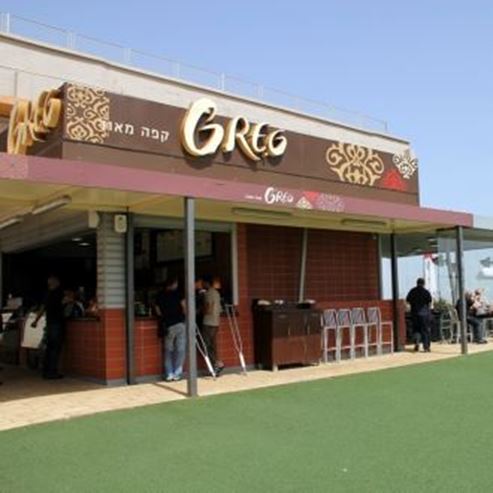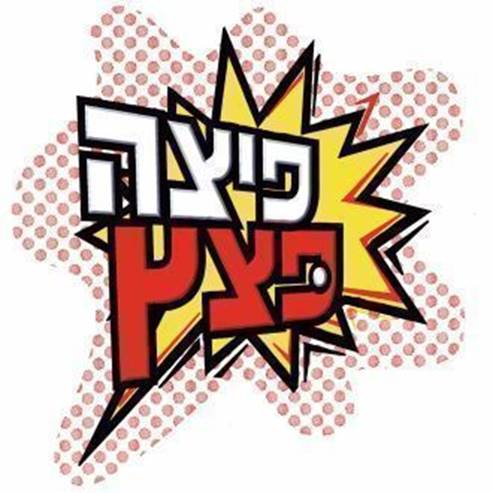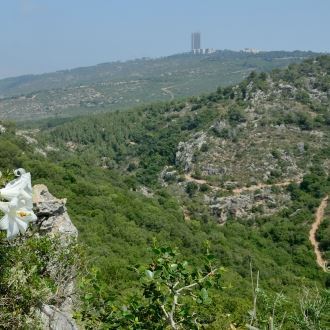Pioneers Trail - Carmel Guard Farm
Sola andata in discesa
L'Autorità Israeliana di Protezione dei Parchi Naturali Nazionali ha riaperto un sentiero lungo l'Azienda agricola Mishmar HaCarmel - il Sentiero dei pionieri. È possibile combinarlo con il percorso che discende dal monumento commemorativo alle vittime dell'incendio del Monte Carmelo e conduce all'Azienda agricola Mishmar HaCarmel. Si avrà inoltre l'opportunità di vedere come è ricresciuta la foresta dal terribile incendio del dicembre 2010.
Principali punti di interesse:
Monumento in memoria delle vittime dell'incendio del Monte Carmelo
Cave del Monte del precipizio
Azienda agricola Mishmar HaCarmel
Il lago a Nahal Oren
Punto di osservazione
Un punto di osservazione sul Monte Carmelo dal monumento alle vittime dell'incendio del Monte Carmelo
Il punto di osservazione dei Notrim sull'azienda agricola Mishmar HaCarmel
Attività dell'Autorità Israeliana di Protezione dei Parchi Naturali Nazionali per migliorare i servizi ai visitatori e preservare il sito
L'Autorità ha restaurato l'azienda agricola sul Monte Carmelo e ha costruito una zona campeggio per gruppi con servizi igienici, docce e angolo cottura. L'Autorità è in procinto di restaurare le aree che sono state danneggiate durante l'ingente incendio del Monte Carmelo e sta lavorando per riportare i turisti nell'area: ha rinnovato il Sentiero dei pionieri, ha creato un sito per arrampicata accanto alle Cave del Monte del precipizio e ha costruito un balcone panoramico sul punto di osservazione dei Notrim. L'Autorità ha inoltre partecipato alla costruzione di un monumento in memoria delle vittime dell'incendio.
Come raggiungere il monumento:
Dallo svincolo di Oren (Route 4), proseguire verso est sulla Route 721 per Beit Oren e svoltare a destra al monumento in memoria delle vittime dell'incendio del Monte Carmelo, a circa 300 metri dall'ingresso del Kibbutz Beit Oren.
Come raggiungere il parcheggio principale:
Dal monumento in memoria delle vittime dell'incendio del Monte Carmelo, proseguire verso ovest per circa 2 km sulla Route 721 e svoltare a sinistra sulla strada asfaltata per il parcheggio del lago.
Informazioni aggiuntive
Il grande incendio del Monte Carmelo
Il 2 dicembre 2010, durante un inverno molto asciutto, si sviluppo un incendio accanto a Isfiya. L'incendio imperversò per cinque giorni, durante i quali persero la vita 44 persone. L'incendio distrusse circa 2500 ettari di terreno, gran parte del quale era costituito da boschi naturali, e danneggiò circa 250 edifici, 74 dei quali furono leggermente bruciati.
Un anno dopo il disastro, venne eretto un monumento alla memoria delle vittime. L'architetto Netanel Ben Yitzhak progettò un monumento avente la forma di un'enorme trave di acciaio che si levava al cielo come un ampio arco. L'arco crea una finestra sul paesaggio, attraverso la quale è possibile scorgere i versanti del Monte Carmelo che andarono in fiamme.
L'Autorità Israeliana di Protezione dei Parchi Naturali Nazionali sta lavorando per restaurare le aree che furono danneggiate. Le opere di restauro includono il monitoraggio della ricrescita del bosco, il ripristino dei sentieri danneggiati dal fuoco e dall'erosione del suolo, il rinnovo delle aree parcheggio, la piantumazione di alberi per creare zone ombreggiate e il taglio degli alberi bruciati su entrambi i lati delle strade e dei percorsi per prevenire pericoli alla sicurezza. L'Autorità sta inoltre sradicando i germogli di alberi di pino, per evitare che prendano il sopravvento sull'area.
The Israel Nature and Parks Authority has reopened a trail on the Mishmar HaCarmel Farm - the Pioneers Trail. You can combine it with the path which descends from the Carmel fire victims' memorial to the Mishmar HaCarmel Farm, as well as taking the opportunity to see how the forest has regrown since the awful fire of December 2010.
Main points of interest:
Carmel fire victims' memorial
The Kedumim Quarries
Mishmar HaCarmel Farm
The lake at Nahal Oren
Viewpoint
A lookout over the Carmel from the Carmel fire victims' memorial
The Notrim viewpoint on the Mishmar HaCarmel Farm
Israel Nature and Parks Authority activities to improve visitor services and preserve the site
The Authority has restored the Carmel Farm and set up a campsite for groups including toilets, showers and a cooking area. The Authority is in the process of restoring areas which were damaged in the huge Carmel fire, and is working to bring visitors back to the area: it has renovated the Pioneers Trail, set up a climbing site next to the Kedumim Quarries, and installed a lookout balcony at the Notrim viewpoint. The Authority also took part in the construction of a monument to those who perished in the fire.
How to get the monument:
From the Oren junction (Route 4) go east on Route 721 to Beit Oren and turn right at the Carmel fire victims' memorial, around 300 m before the entrance to Kibbutz Beit Oren.
How to get to the main car park:
From the Carmel fire victims' memorial go west for around 2 km on Route 721 and turn left onto the paved road to the lake car park.
Background
The great Carmel fire
On 2nd December 2010, during a very dry winter, a fire broke out next to Isfiya. The fire raged for five days, during which 44 people perished. The fire completely destroyed around 25,000 dunams, most of which was natural woodland, and damaged around 250 buildings, 74 of which were lightly burned.
A year after the disaster, a memorial was put up to those who perished. Architect Netanel Ben Yitzhak designed a monument in the shape of a huge steel rafter rising up to the sky in a large arch. The arch creates a window over the landscape, through which views of the Carmel slopes that went up in fire can be seen.
The Israel Nature and Parks Authority is working to restore the areas which were damaged. This restoration includes monitoring the regrowth of the woodland, renovating paths which were damaged by the fire and by soil erosion, renovating parking areas and planting trees for shade, and cutting down burnt trees from the sides of roads and paths to prevent safety hazards. The Authority is also uprooting pine shoots to prevents them from taking over the area.
Trip route
1. Kedumim Quarries
A trail marked in black runs down from the memorial on a slope where beta plants grow: the soft-hairy rockrose, the spiny broom, the tree-lobed sage, and the Genista fasselata - one of the most mystifying of Israel’s plants. This thorny plant resembles the spiny broom, and in Israel it grows only in the Carmel.
The trail goes down to a bend in Route 721, and many signs of quarrying can be seen nearby. There was probably a quarry here in the Byzantine period, and it was out of stone from here that the ancient settlement, whose remains can be seen on the Mishmar HaCarmel Farm, was built.
2. Mishmar HaCarmel
From the bend in the road and the parking area, the road which goes up the hill to the Mishmar HaCarmel Farm (Khirbet Shalala) can be seen easily. Continue by foot on the path going diagonally up the slope to the left of the gate, outside of the site’s fence. Climb around 400 m to the gate, and go through here to the farm.
There are remnants of an ancient structure on the site, built in the style typical of the Hellenistic and Roman periods.
Ancient quarries have been uncovered around the site, as well as olive presses and wine presses, farming terraces and water pits. Only a small area has been excavated, but researchers have concluded from their findings that Khirbet Shalala was the city of Carmel, mentioned in the writings of the Roman writer Pliny (from the 1st century AD).
From the ancient buildings, go up to the right to the centre of the site. The large building is the farmhouse. Its foundations are Ottoman and its rooms are built around a courtyard. In 1935 a group of workers called Mishmar HaCarmel came to the site. At first they lived in tents at Nahal Oren, while members of the group paved roads, looked after the groves and grew vegetables. A year later, in April 1936, the Arab Revolt broke out and the residents moved into the farmhouse. They fortified the building and filled in the external walls to make a barrier wall. The Arabs attacked the group on the roads or when they were working, and in three ambushes they killed 15 of them. On 1st October 1939 the founders of Kibbutz Beit Oren settled on the farm, but after a few tries the site was abandoned.
At the western edge of the site the Notrim viewpoint was set up - a lookout balcony overlooking the fabulous scenery of the western Carmel to the sea.
3. Pioneers Trail
Following the Carmel fire, an old route across the south-west slope of the Mishmar HaCarmel hill was discovered. The Israel Nature and Parks Authority has restored the path, which begins next to the viewpoint. This is the Pioneers Trail, dedicated to the memory of Assaf Ramon z”l, son of Ilan Ramon, the astronaut who perished in the Columbia space shuttle crash in 2003. Assaf, an IAF pilot, was killed in a practice flight in 2009. The Pioneers Trail is around half a kilometre in length. It crosses the slope which rises above Nahal Oren, looking over the stream’s reservoir, and returns to the Kedumim Quarries.
While work laying the path was being carried out, four grenades were found in a small cave, which were made by members of the Hebrew Underground before the establishment of the State. The letters USA were written on the grenades, parodical initials standing for ‘Unsra Shtikel Arbeit’ (‘Our Independent Product’ in Yiddish). Shoe soles, Primus stoves and tins of food from the same period were found around the cave.
4. Nahal Oren
From here the path marked in green goes down to Nahal Oren and the stone arch. The arch is part of an aqueduct which brought spring water to the flour mill. The mill was in use up until the First World War.
Here you will join a red path (the green path leads to Ein Alon, around one kilometre from here), and go down this along the slope of the stream. Along the way the waters of Ein Oren burst forth, and next to them holy bramble and oleander. The woodland trees here are surprisingly large. The waters of the spring are a breeding ground for salamanders; at the beginning of winter they spawn tadpoles here. In the world of the salamanders of the Carmel, this is the southern border of their habitat.
Around half a kilometre from the mill, the stream creates a small valley, and next to this are the remains of a garden - olive trees, a beautiful palm tree and fig trees - leftovers from the Carmel Farm group. In the winter a dam stops the flowing waters of Nahal Oren and creates a lovely little lake here. The Israel Nature and Parks Authority is restoring the lake so that water will remain in it all year round.
The red path crosses over the dam to the other side, continues beneath the road bridge to Givat Wolfson, and ends at the lake car park. The lake car park is one of the biggest and most central in the Carmel, and this is where the trek ends. Make sure to notice the inscription which remains on the bridge until today: Solel Boneh Haifa 1937.
photos : pikiwiki Web
1. Le Cave del Monte del precipizio
Un sentiero segnalato con indicazioni in nero scende sul basso dal monumento alla memoria verso un pendio dove crescono piante beta: il cisto villoso, la ginestra spinosa, la salvia fruticosa e la genista fasselata - una delle piante più confuse tra le israeliane. Questa pianta spinosa ricorda la ginestra spinosa e in Israele cresce solo sul Monte Carmelo.
Il sentiero continua verso il basso incurvandosi sulla Route 721 e nelle vicinanze è possibile vedere i numerosi segni testimonianti le attività di scavo. Molto probabilmente nel periodo bizantino questa area ospitava una cava ed è proprio con queste rocce che fu costruito l'antico insediamento, i cui resti possono essere osservati nell'azienda agricola Mishmar HaCarmel.
2. Mishmar HaCarmel
Dalla curva della strada e dall'area parcheggio, la strada che conduce in cima alla collina verso l'azienda agricola Mishmar HaCarmel (Khirbet Shalala) può essere intravista facilmente. Continuare a piedi lungo il percorso, proseguendo diagonalmente su per il pendio verso la sinistra del cancello, fuori dal recinto del sito. Salire per circa 400 metri verso il cancello, quindi attraversatelo per raggiungere l'azienda agricola.
Il sito ospita rovine di un'antica struttura costruita nel tipico stile ellenico e romano.
Le antiche cave sono state scoperte nell'area del sito, così come i frantoi e i torchi, i vivai e le fosse scavate nel terreno per la raccolta d'acqua. Solo una piccola parte dell'area è stata scavata ma, analizzando le scoperte fatte, i ricercatori hanno concluso che Khirbet Shalala sia la città del Carmelo, come menzionato nelle opere dello scrittore romano Plinio (dal primo secolo dopo Cristo).
Dagli antichi edifici, proseguire in alto verso destra, al centro del sito. L'ampio edificio è l'azienda agricola. Le fondazioni sono ottomane e le stanze sono costruite attorno ad un cortile. Nel 1935 un gruppo di lavoratori chiamati Mishmar HaCarmel si trasferì nel sito. Dapprima vissero in tende a Nahal Oren, mentre i membri del gruppo asfaltavano le strade, si occupavano dei frutteti e coltivavano verdure. Un anno più tardi, nell'aprile del 1936, scoppiò la grande rivolta araba e i residenti si spostarono nell'azienda agricola. Fortificarono l'edificio e riempirono le mura esterne per costruire una barriera. Gli arabi attaccarono il gruppo sulle strade o quando erano intenti a lavorare e durante tre imboscate uccisero 15 dei residenti. Il 1° ottobre 1939 i fondatori del kibbutz Beit Oren si stabilirono nell'azienda agricola, ma dopo alcuni tentativi il sito fu abbandonato.
All'estremità occidentale del sito fu costruito il punto di osservazione dei Notrim - un balcone scopo di vedetta che si affacciava sullo splendido paesaggio spaziante dai pendii occidentali del Monte Carmelo al mare.
3. Sentiero dei pionieri
Seguendo le tracce dell'incendio del Monte Carmelo, fu scoperto un antico sentiero sul versante sud-ovest della collina Mishmar HaCarmel. L'Autorità Israeliana di Protezione dei Parchi Naturali Nazionali ha restaurato il sentiero, che inizia accanto al punto di osservazione. Questo è il Sentiero dei pionieri, dedicato alla memoria di Assaf Ramon zl, figlio di Ilan Ramon, l'astronauta che perse la vita nell'incidente dello Shuttle Columbia nel 2003. Assaf, un pilota dell'IAF rimase ucciso durante un volo di pratica nel 2009. Il Sentiero dei pionieri ha una lunghezza di circa mezzo chilometro. Attraversa il pendio che si erge sopra Nahal Oren, di fronte al bacino dei torrenti, e riconduce alle Cave del Monte del precipizio.
Durante i lavori di costruzione del sentiero, furono trovate in una piccola grotta quattro granate di piccole dimensioni, realizzate dai membri dell'organizzazione sotterranea nota come "Hebrew Underground", prima della costituzione dello Stato. Sulle granate erano scritte le lettere USA, acronimo di "Unsra Shtikel Arbeit" ("Il nostro prodotto indipendente" in yiddish). Nella grotta furono scoperte suole di scarpa, stufe da campeggio Primus e scatolette di cibo risalenti allo stesso periodo.
4. Nahal Oren
Da qui il sentiero segnalato in verde prosegue verso il basso in direzione di Nahal Oren e dell'arco di pietra. L'arco fa parte di un acquedotto che trasportava l'acqua di sorgente al mulino di farina. Il mulino fu utilizzato fino alla Prima guerra mondiale.
A questo punto, è possibile proseguire su un percorso rosso (il sentiero verde conduce a Ein Alon, a circa 1 km di distanza) e quindi lungo il pendio del torrente. Lungo il sentiero scorrono impetuose le acque dell'Ein Oren e accanto ad esse si sviluppano i rovi dell'Anatolia e gli oleandri. Gli alberi del bosco sono particolarmente ampi. Le acque del torrente costituiscono un terreno fertile per le salamandre, che all'inizio dell'inverno depositano le uova che si trasformeranno in girini. Nell'habitat delle salamandre del Monte Carmelo, questo è il punto più a sud in cui si riproducono.
A circa mezzo chilometro dal mulino, il torrente crea una piccola valle e accanto ad essa si trovano i resti di un giardino - alberi di ulivo, una palma e alberi di fico - appartenuto al gruppo dell'azienda agricola del Monte Carmelo. Nei mesi estivi, una diga interrompe il corso d'acqua del Nahal Oren e crea un piccolo lago. L'Autorità Israeliana di Protezione dei Parchi Naturali Nazionali sta ristrutturando il lago, in modo che le acque vi rimangano tutto l'anno.
Il sentiero rosso attraversa la diga sul lato opposto, continuando al di sotto del ponte per Givat Wolfson e terminando nel parcheggio del lago. Il parcheggio del lago è uno dei più grandi e più centrali del Monte Carmelo e qui è dove termina l'escursione. Vale la pena di leggere l'iscrizione che si è conservata sul ponte fino ad oggi: Solel Boneh Haifa 1937.
foto : pikiwiki Web
- Tipo
- Escursionismo
- Regione
- Nord
- Località
- Haifa
- Lunghezza
- Circa 3 km
- Durata
- Circa 2 ore
- Punto di partenza
- Monumento alle vittime dell'incendio del Monte Carmelo (mappa)
- Punto finale
- Il parcheggio del lago (mappa)
- Equipaggiamento speciale
- Cappello, scarpe, acqua
- Precauzioni
- Fare attenzione durante la discesa a Nahal Oren
- Parcheggio
- Parcheggio
- Accessibilità
- Accessibile
- Acqua potabile
- Acqua potabile
- Adatto ai bambini
- Adatto ai bambini
- Picnic adatto
- Picnic adatto
Sentieri simili
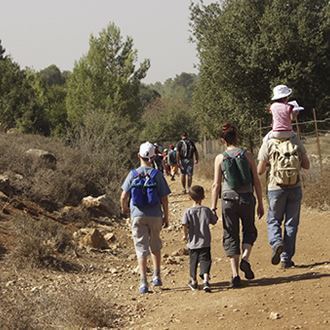
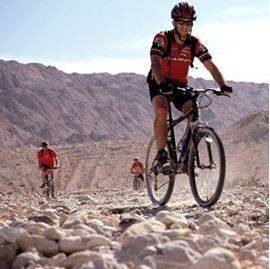
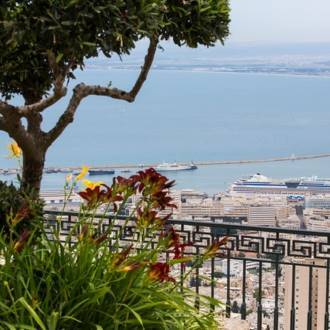
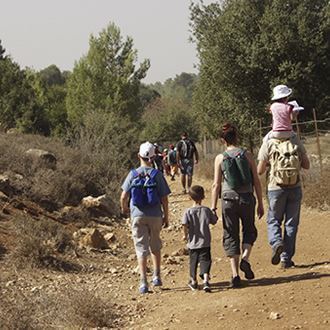
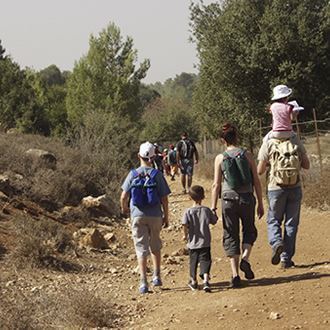
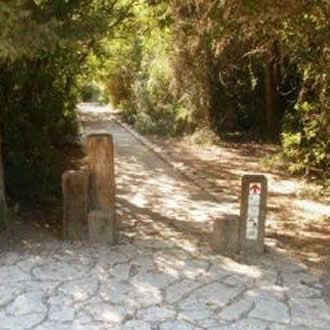
Attrazioni nelle vicinanze
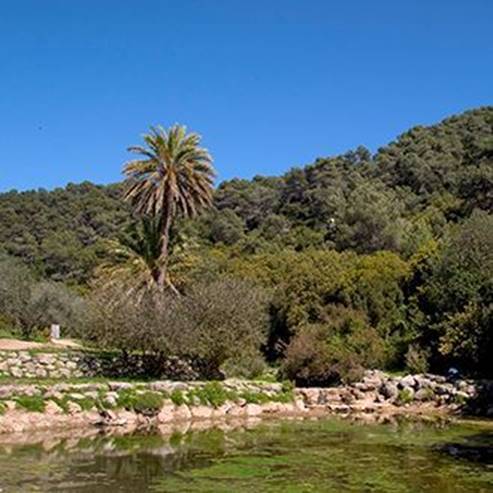
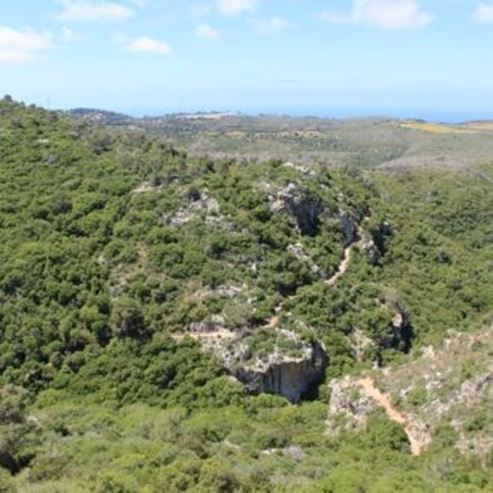

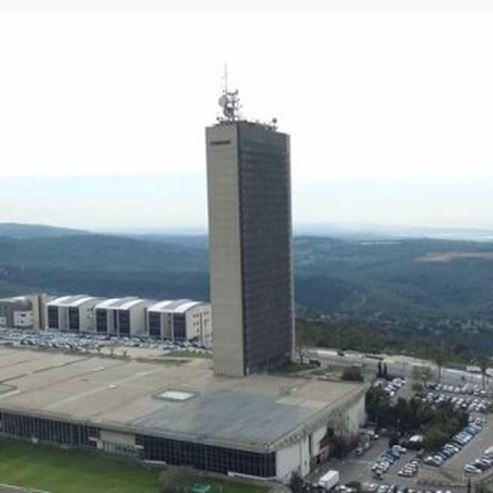
Galleria Osservatorio di Eshkol
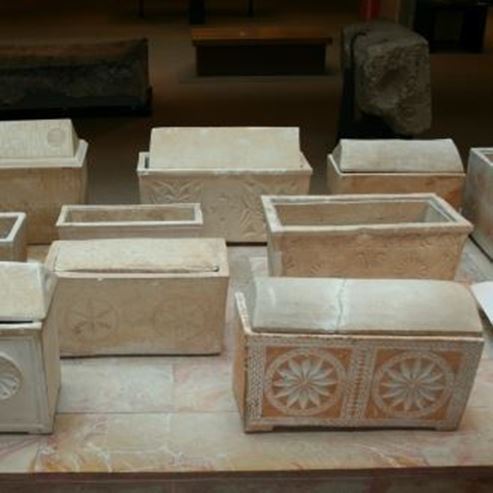
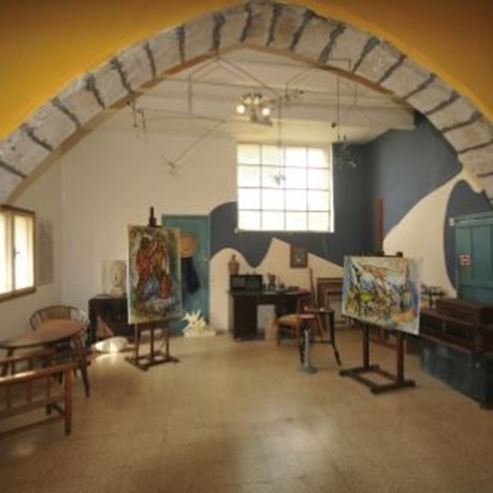
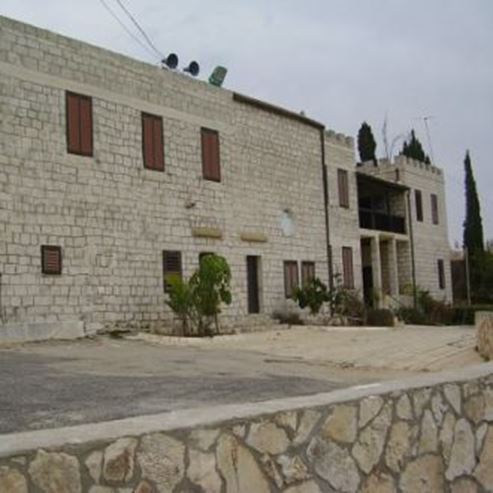
Ristoranti nelle vicinanze


